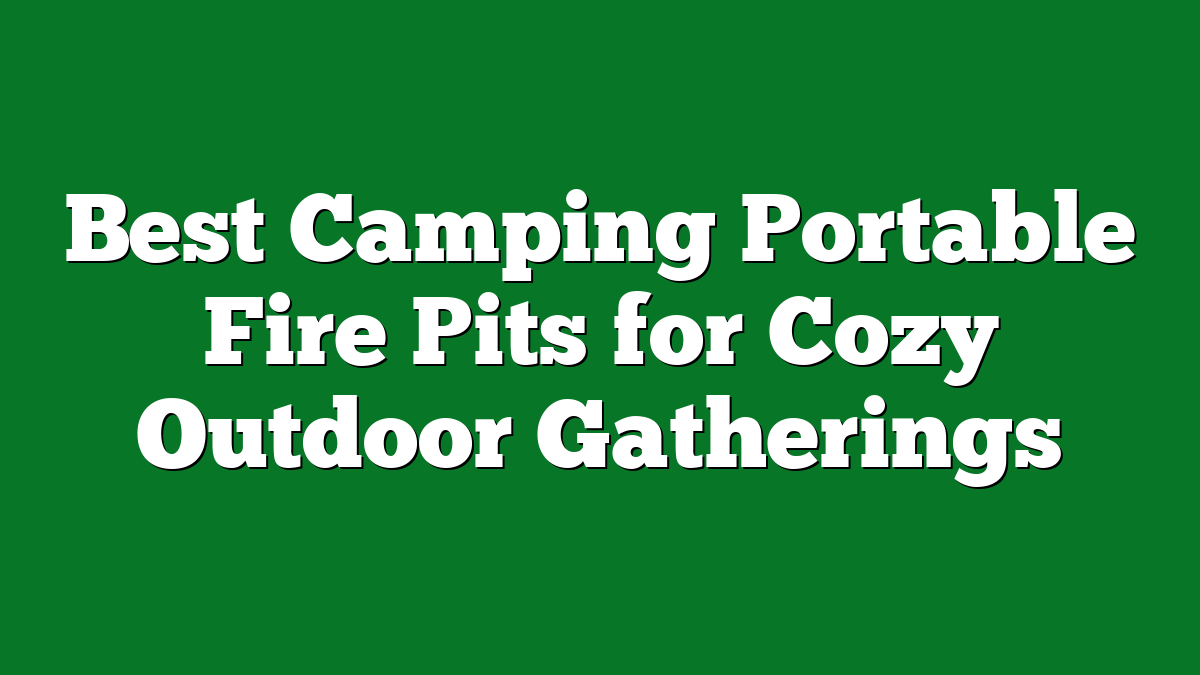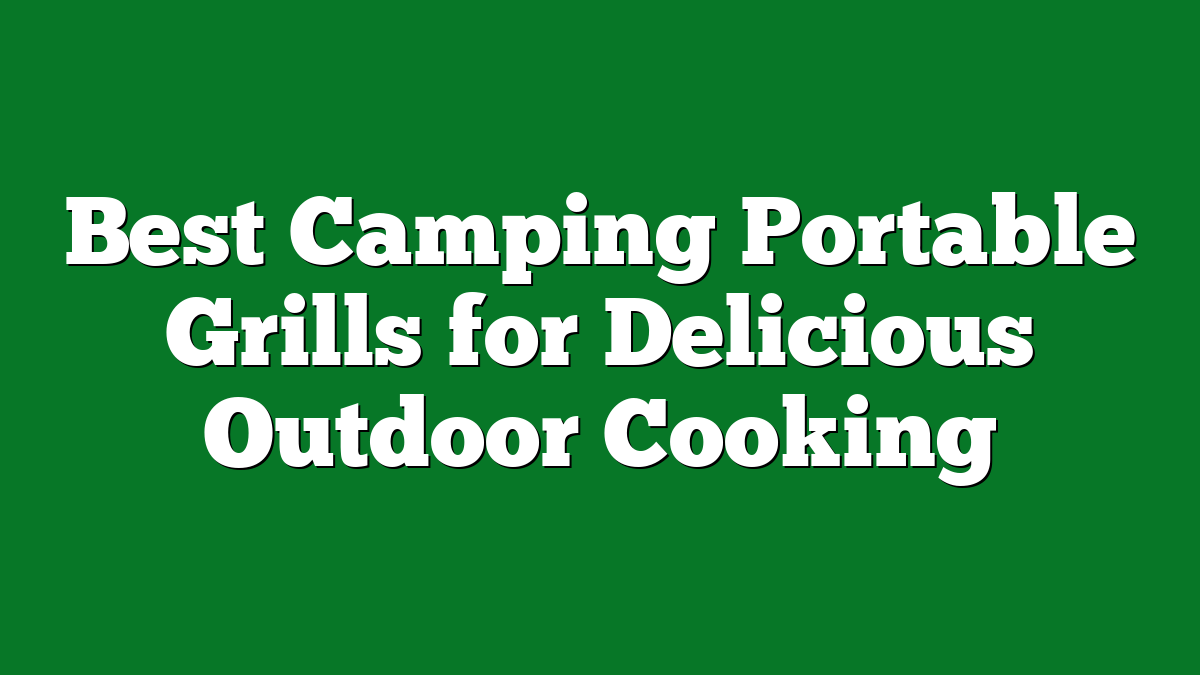Camping is one of my favorite ways to escape the hustle and bustle of everyday life. There’s something magical about being surrounded by nature, but packing all the gear can feel overwhelming. I’ve found that you don’t need a mountain of equipment to enjoy a great camping trip. In fact, less gear often leads to a more enjoyable experience.
Top 10 Tips for Camping With Less Gear
- Choose Lightweight Gear
I prioritize lightweight and compact equipment. Using items like a lightweight tent, sleeping bag, and cooking gear saves space and weight.
- Share Equipment
I often camp with friends, so we share essentials like cooking gear and tents. This cuts down on what I need to pack.
- Opt for Multi-Purpose Items
I look for items that serve multiple functions. For example, a bandana works as a sun shield, a towel, or a pot holder.
- Plan Simple Meals
I prepare easy-to-cook meals that require minimal ingredients. By doing this, I limit the cooking gear and food I take.
- Utilize Natural Resources
I scout for natural materials like rocks for cooking or wood for shelter. This reduces the need for extra tools and gear.
- Pack a Minimal Clothing Set
I bring just enough clothing for the duration of my trip. Two or three versatile outfits usually suffice, along with a good pair of hiking shoes.
- Prioritize Safety Gear
I always pack a first aid kit and necessary tools for emergencies, but I keep it light. A multi-tool and firestarter fit the bill without weighing me down.
- Embrace Minimalist Camping
I practice minimalist camping. Focusing on survival skills like foraging and fishing means I can rely less on gear and more on nature.
- Research Your Destination
I familiarize myself with my camping area beforehand. Knowing what resources are available can help me reduce my gear.
- Stay Organized
I keep my gear organized with packing cubes or stuff sacks. This makes it easier to find what I need without overpacking unnecessary items.
Evaluate Your Gear Essentials
Evaluating gear essentials keeps the focus on what truly matters in camping. I streamline my packing to ensure I only bring what’s necessary and beneficial.
Prioritizing Multi-functional Items
Prioritizing multi-functional items significantly reduces gear weight. I carry a camping knife that doubles as a food prep tool and a fire starter. My cooking pot serves both as a container for boiling water and a bowl for meals. When looking for gear, I focus on items that can fulfill multiple roles. For instance, a quick-dry towel acts as both a dish rag and a personal drying cloth. The more versatile the item, the less I need to pack.
Reducing Clothing Needs
Reducing clothing needs simplifies packing and minimizes weight. I take only three pairs of clothing: a quick-drying shirt, moisture-wicking underwear, and durable pants. Layering plays a crucial role in staying comfortable in various weather conditions. I include a lightweight jacket that can be worn for warmth or rain. By choosing clothing that’s breathable and quick-drying, I ensure I stay comfortable without carrying excess clothing.
Choose the Right Camping Location
Choosing the right camping location can significantly reduce the gear you need and enhance your experience. A well-selected spot provides natural resources, minimizes travel complications, and optimizes comfort.
Accessibility and Amenities
Accessibility matters. Picking a site with reasonable access means less gear for setting up camp. I prefer locations close to parking areas or trails that allow easy transport of my essentials. Amenities like restrooms and potable water sources can also reduce the weight of my packing list. When I camp at well-maintained sites, I bring fewer cooking supplies and can focus on enjoying the surroundings.
Navigating Local Weather Conditions
Understanding local weather conditions is key for packing smart. I always check forecasts before heading out. Choose locations known for specific weather patterns; I often select spots with predictable conditions, which helps me pack appropriately. For example, if I know it’s likely to be chilly at night, I’ll take my lightweight sleeping bag instead of a bulkier one without adding excessive weight. Staying aware of potential weather changes lets me adjust my pack to include just what I need for comfort and safety.
Opt for Lightweight Equipment
Choosing lightweight equipment can transform your camping experience. With less bulk, I enjoy greater mobility and flexibility while connecting with nature. It streamlines packing and makes the journey more enjoyable.
Benefits of Compact Gear
Compact gear offers numerous advantages. First, it reduces the overall weight, making hikes easier and allowing for longer treks. Second, it frees up space in my backpack, letting me carry other essentials like food or safety gear. Third, compact gear often doubles as multi-purpose items, which means fewer things to pack. For example, a hammock can serve as both a sleeping option and a lounging spot during the day. Lastly, lightweight gear tends to be easier to handle, which leads to less fatigue and more enjoyment in the great outdoors.
Suggested Lightweight Alternatives
Here are some practical lightweight alternatives to consider:
- Sleeping Bag: Choose a down sleeping bag with a low temperature rating for warmth without excessive weight.
- Tent: Opt for a lightweight backpacking tent that packs down small but still provides ample protection.
- Cooking Gear: Use a compact camp stove and a titanium pot that heats quickly without adding extra weight.
- Clothing: Select quick-drying, moisture-wicking fabrics that are light but keep you comfortable in varying conditions.
- Backpack: Invest in a lightweight backpack designed for hiking that includes enough space for gear without unnecessary bulk.
- Water Filtration: Carry a portable water filter instead of heavy water bottles, allowing you to refill from natural sources.
- Multi-tool: Consider a multi-tool that combines several functions, reducing the need for multiple separate tools.
Integrating these lightweight alternatives into my camping setup has greatly enhanced my enjoyment and adventure.
Plan Your Meals Wisely
Planning meals wisely makes a huge impact on minimizing gear while camping. Simplicity is key for both cooking and cleanup.
Simple Meal Ideas
I opt for easy-to-prepare meals that require fewer ingredients and cooking tools. Here are some of my favorites:
- Oatmeal: Quick to prepare and energizing, I add nuts or dried fruit for variety.
- Wraps: Using tortillas, I fill them with pre-cooked meats, cheese, and veggies for a satisfying meal.
- One-Pot Pasta: I cook pasta, vegetables, and sauce in one pot, making cleanup easy.
- Grilled Foil Packets: I toss chopped veggies and protein into foil and grill them over the fire.
- Instant Rice or Quinoa: Quick-cooking grains make a great base for many meals.
By focusing on simple meal ideas, I limit the need for heavy cookware without sacrificing taste or nutrition.
Efficient Cooking Methods
Efficiency in cooking is fundamental when camping with less gear. Here are some methods I use to streamline the process:
- Single-Burner Stove: A lightweight, compact stove speeds up cooking and reduces fuel needs.
- Campfire Cooking: Utilizing the campfire eliminates the need for a stove and enhances the outdoor experience.
- Prepping at Home: I chop and marinate ingredients in advance, saving time and effort at the campsite.
- Freezing Meals: By freezing meals before the trip, I enjoy fresh food while keeping coolers lighter.
- Multi-Use Cookware: I rely on pots that double as bowls or pans, minimizing the number of items I pack.
Adopting these efficient cooking methods makes meal preparation a breeze, allowing for more time spent enjoying nature.
Streamline Your Packing Process
Packing efficiently makes a significant difference in the camping experience. By using effective packing techniques, I can travel lighter and enjoy my time outdoors more fully.
Packing Techniques for Space Management
Utilizing space effectively ensures I can bring only the essentials. I roll my clothes instead of folding them; this method reduces wrinkles and saves room. I also prioritize packing items into stuff sacks or compression bags; these keep my gear organized and compact. When stacking gear, I fill gaps with smaller items, like socks or utensils, to maximize space. Additionally, I pack heavier items close to my back for better weight distribution, helping me stay comfortable during hikes.
Essential vs. Non-Essential Items
Identifying what’s truly essential enhances my camping experience. I categorize items into must-haves and nice-to-haves. My essentials include a durable tent, a reliable sleeping bag, and a multi-tool; these ensure I can handle various situations. Non-essential items get left behind. For instance, I skip the bulky cooler for a lightweight insulated water bottle; this decision saves weight and space. By evaluating each item’s practicality and purpose, I can pack wisely, ensuring that I carry only what’s necessary for a successful camping trip.
Conclusion
Camping with less gear can truly transform your outdoor experience. By focusing on essentials and choosing versatile items I’ve found that I can enjoy my time in nature without being bogged down by excess. Embracing minimalism not only lightens my load but also allows me to connect more deeply with my surroundings.
Whether it’s planning simple meals or selecting the right campsite I’ve learned that every little choice counts. So next time you hit the trails remember that less can be more. With a little creativity and thoughtful packing you’ll find that the great outdoors is best enjoyed with just the essentials. Happy camping!











